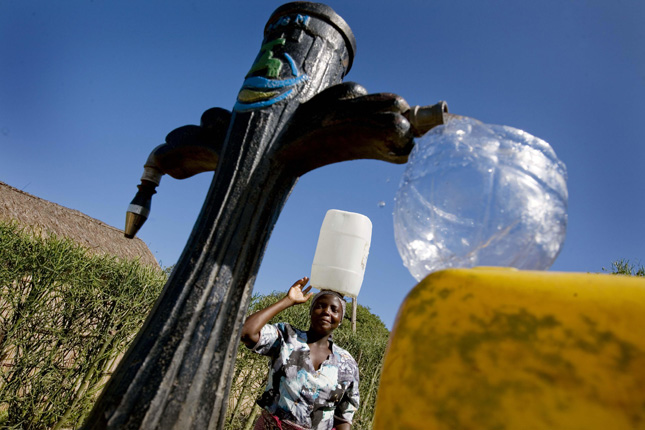-
Fresh Water, Safe Water: Integrating Freshwater Conservation and WASH in Sub-Saharan Africa
August 23, 2017 By Namita Rao
Despite sharing a common element—water—the freshwater community and the Water, Sanitation and Hygiene (WASH) community have traditionally worked independently of each other, said Jimmiel Mandima, director of U.S. government relations at the African Wildlife Foundation during a recent webinar organized by USAID-supported Africa Biodiversity Collaborative Group (ABCG). However, that is starting to change: “Integration will bring value addition and synergy,” he said.
Freshwater experts work to protect watersheds from environmental degradation, while WASH seeks to improve people’s access to safe drinking water and sanitation. “We are all aware that in most cases, the landscapes where the water from watersheds flow, tend to be in very remote areas that are usually resided by impoverished communities that can also benefit from WASH. It is important to manage those ecosystems keeping in mind the implication for WASH,” said Mandima.
By integrating freshwater and WASH field sites in South Africa and Uganda, ABCG’s seven members hope to help reduce watershed degradation and pollution, and improve the health of freshwater ecosystems.
The webinar highlighted tools and approaches that are being used to develop and implement integrated freshwater conservation and WASH programs in sub-Saharan Africa. For example, a 2014 workshop in Nairobi gathered best practices, guidelines, and recommendations for an integrated approach from frontline practitioners from WASH, health and conservation communities in Africa.
“Many times, conservation and development practitioners work in the same areas, but they don’t work together. So this really represents an opportunity to meet our mutual goals of human wellbeing and conservation for sustainable development,” said Janet Edmond, senior director for peace and development partnerships in the Center for Environment and Peace at Conservation International.
Edmond cited two ongoing projects: a Conservation International project in South Africa with its local affiliate, Conservation South Africa, and one in Uganda, piloted by the Jane Goodall institute. The two groups have also put together a gender analysis to identify how men and women use these services, said Edmond.
Water, poverty, and environment are all interconnected; if we design more projects with integration in mind, “we are likely to get a better return on investment,” said Mandima.
Read More:
- Evidence from programs linking biodiversity and WASH efforts in Africa shows integration can be fruitful and cost-effective, but challenging
- Including population, health, and environment (PHE) programming can help build community support for integrated biodiversity conservation and WASH programs
- WASH programs can help advance maternal health by providing safe drinking water for vulnerable women and children
- A new research agenda builds the case for integrated development
Sources: Africa Biodiversity Collaborative Group, Africa Wildlife Foundation, Conservation International
Photo Credit: A woman collects water from a stand pipe in Costa del Sol near Maputo, Mozambique, April 2009, courtesy of Australian Department of Foreign Affairs and Trade/Kate Holt/Africa Practice
 A Publication of the Stimson Center.
A Publication of the Stimson Center.



